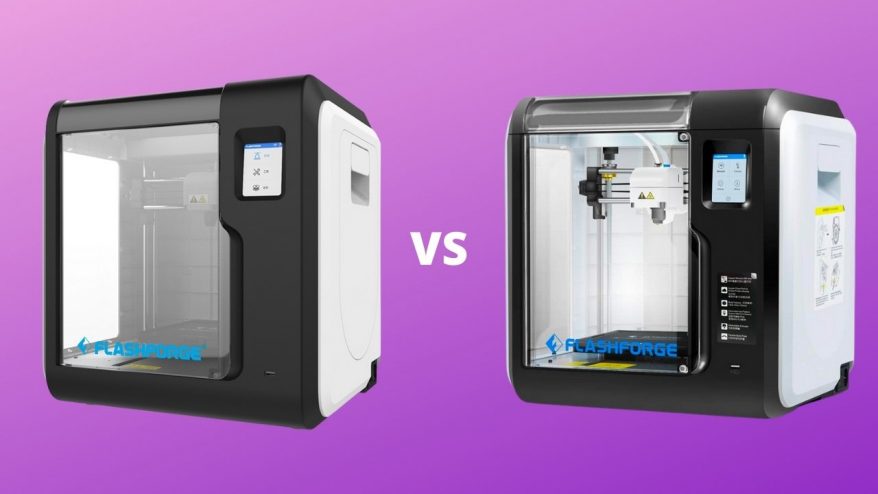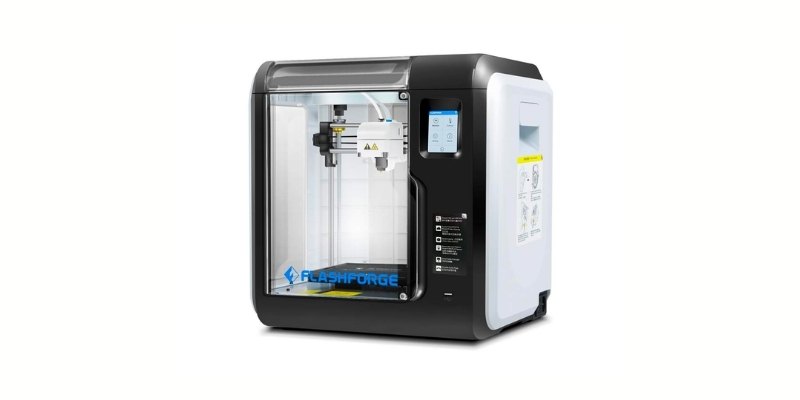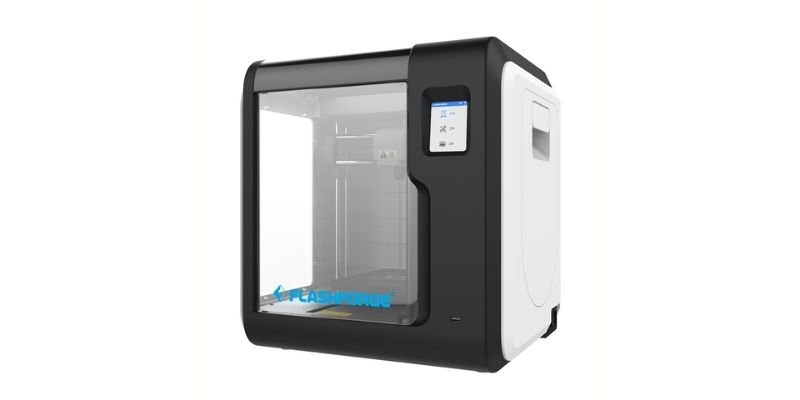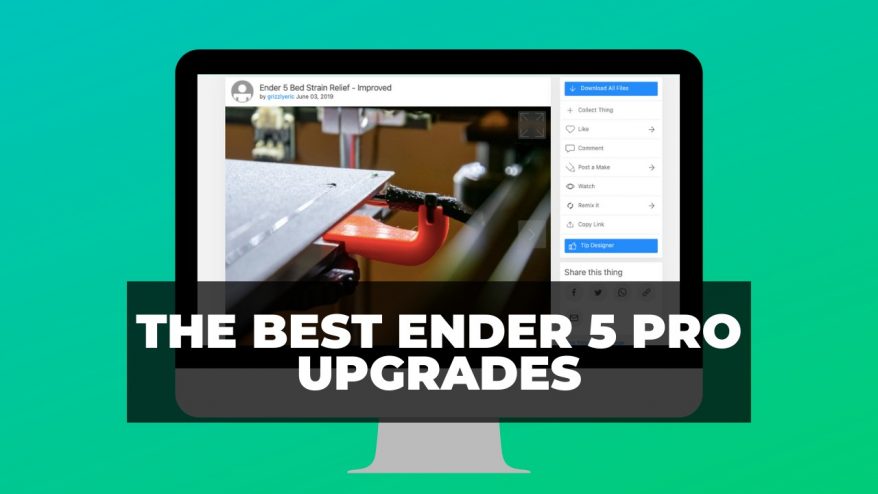
Other than appending Lite to its name, is the Adventurer 3 Lite all that different from the base Flashforge Adventurer 3? What features do you loses in return for that lower price tag?
We’re here to find out in a head-to-head Flashforge Adventurer 3 vs Adventurer 3 Lite comparison.
First, we’ll get to know our contenders before diving into what sets them apart, giving you the complete picture on the main differences, and recommending each based on your needs.
BUDGET PICK

Flashforge Adventurer 3 Lite
Available at:
PREMIUM PICK

Flashforge Adventurer 3
Available at:
Flashforge Adventurer 3 vs Adventurer 3 Lite – Meet The Printers
3DSourced is reader-supported. When you buy through links on our site, we may earn an affiliate commission. Learn more
Flashforge Adventurer 3
- Price: $369 — Available at Flashforge here
- Printing technology: FDM
- Build volume: 150 x 150 x 150 mm
- Filament compatibility: PLA, ABS
- Layer height: 100-400 microns
- Max extruder temp: 240°C
- Max bed temp: 100°C
- Connectivity: USB, Wi-Fi, Ethernet
The Adventurer 3 counts among the growing number of consumer printers designed from the ground up with effortless usability and hassle-free out-of-the-box printing in mind.
The 150 x 150 x 150 mm build volume is modest by FDM standards but aligns with the Adventurer 3’s aim of being a beginner and education-friendly printer. Material compatibility covers FDM staples PLA and ABS thanks to an enclosed chamber, max nozzle temperature of 240°C, and a heated bed that warms to 100°C.
The competitively-priced Adventurer 3 houses a robust feature list for the price. Highlights include a built-in filament chamber with automatic filament loading, run-out sensor, removable print bed, and an easy detachable nozzle system. Additionally, the printer extends functionality with a touchscreen interface, a built-in HD camera, and USB/Wi-Fi/Ethernet connectivity with cloud monitoring and slicing.
Flashforge also released an almost identical Adventurer 4, which has a higher maximum extruder temperature to extend material compatibility to PC/PETG, and a larger build volume.
Pros:
- Great feature set for the price
- Affordable
- Beginner-friendly
Cons:
- Small build volume
- Little scope for tinkering and upgrades
Flashforge Adventurer 3 Lite
- Price: $339 — Available at Flashforge here
- Printing technology: FDM
- Build volume: 150 x 150 x 150 mm
- Filament compatibility: PLA, ABS
- Layer height: 100-400 microns
- Max extruder temp: 240°C
- Max bed temp: 100°C
- Connectivity: USB, Wi-Fi, Ethernet
Launched in tandem with the Flashforge Adventurer 3, the Adventurer 3 Lite is identical in almost every way, bar two minor differences: it does away with the built-in HD camera and the filament run-out detection sensor.
Beyond these two features, the printers deliver the same compact, contained printing experience and have the exact same specifications.
Pros:
- Even lower-cost than the Adventurer 3
- Perfect for beginners, education, and younger maker
Cons:
- No built-in camera
- No filament run-out detection
Flashforge Adventurer 3 vs Adventurer 3 Lite – The Differences
As you can see from our brief overview above, there’s very little to tell the Adventurer 3 and Adventurer 3 Lite apart. Nevertheless, let’s move on to helping you find the right option with an Adventurer 3 vs Adventurer 3 Lite feature comparison.
Built-in HD Camera
The Adventurer 3 features a built-in 2MP HD camera that allows for recording and real-time print monitoring via FlashCloud or PolarCloud. The quality is respectable, but nothing spectacular. The feed is susceptible to shakes caused by extruder and print bed jerks but still grants decent monitoring.
There is no camera on the Adventurer 3 Lite.
Filament Run-out Detection
The Adventurer 3 comes with a filament run-out detection sensor as standard, tuned to halt printing when filament runs low and resume when the spool is replaced. It’s a desirable and helpful convenience feature that plays into the Adventurer 3 usability design but doesn’t affect performance.
The Adventurer 3 Lite doesn’t have filament run-out detection.
Extruder Temperature
Both the base Adventurer 3 and Adventurer 3 Lite offer a maximum extruder temperature of 240°C. However, the Adventurer 3 V2 is compatible with a higher temperature nozzle, pushing to 265°C, opening the door to PC and PETG printing alongside PLA and ABS.
The Adventurer 3 V2 comes packaged with a 0.4 mm 265°C nozzle along with 0.3 mm 240°C and 0.4mm 240°C nozzles. The detachable nozzle system makes easy work of swapping them out when needed.
Build Plate
There’s no difference between the removable and heated build plate found on the Adventurer 3 and Lite, but buying the Adventurer 3 V2 gives you an extra replacement plate. It is arguable whether this is useful, but it could be handy to get the next print job up and running before scraping off a finished print, for example.
Price
Price is where both printers deviate the most from one another. Based on current prices, the Adventurer 3 sells for $369.00 on Flashforge’s online shop. You can pick up the Adventurer 3 Lite for $339.00. The ever-so-slightly improved Adventurer 3 V2 commands a fairly chunky price jump to $449.00.
Flashforge Adventurer 3 vs Adventurer 3 Lite: The Winner
Flashforge Adventurer 3 vs Adventurer 3 Lite – Best Overall
Flashforge Adventurer 3 vs Adventurer 3 Lite is a tough comparison. As we’ve highlighted above, they are fundamentally the same 3D printer with only minor differences. Ultimately, singling out the best one depends on your specific preferences and needs.
If you’ll actively use the built-in camera for each print and want the peace of mind of a run-out sensor, then the Flashforge Adventurer 3 may well be the printer for you. On the other hand, the Adventurer 3 Lite is the thriftier buy if you want to save money with no impact on print quality.
Lastly, if you want to print with PC/PETG, then the Adventurer 3 V2 is likely the better option, though it may be best to wait for the price to drop as the extras don’t justify the higher price right now.
BUDGET PICK

Flashforge Adventurer 3 Lite
Available at:
PREMIUM PICK

Flashforge Adventurer 3
Available at:
Flashforge Adventurer 3 vs Adventurer 3 Lite – Best Value
Our value pick is the Adventurer 3 Lite for the simple fact that it costs $30 less than the full-fat version. It retains the same core experience and specifications minus features that don’t impact print quality at all or even the overall experience all that significantly.
Although useful for real-time remote monitoring, the built-in HD camera is non-essential. A feature frugally-minded makers and schools on a shoestring budget will happily forgo to save cash. Losing the convenient filament run-out sensor stings a tad more, but manually checking there’s enough filament before firing off a print is hardly taxing or time-consuming.
You can read some of our other comparison articles here:




